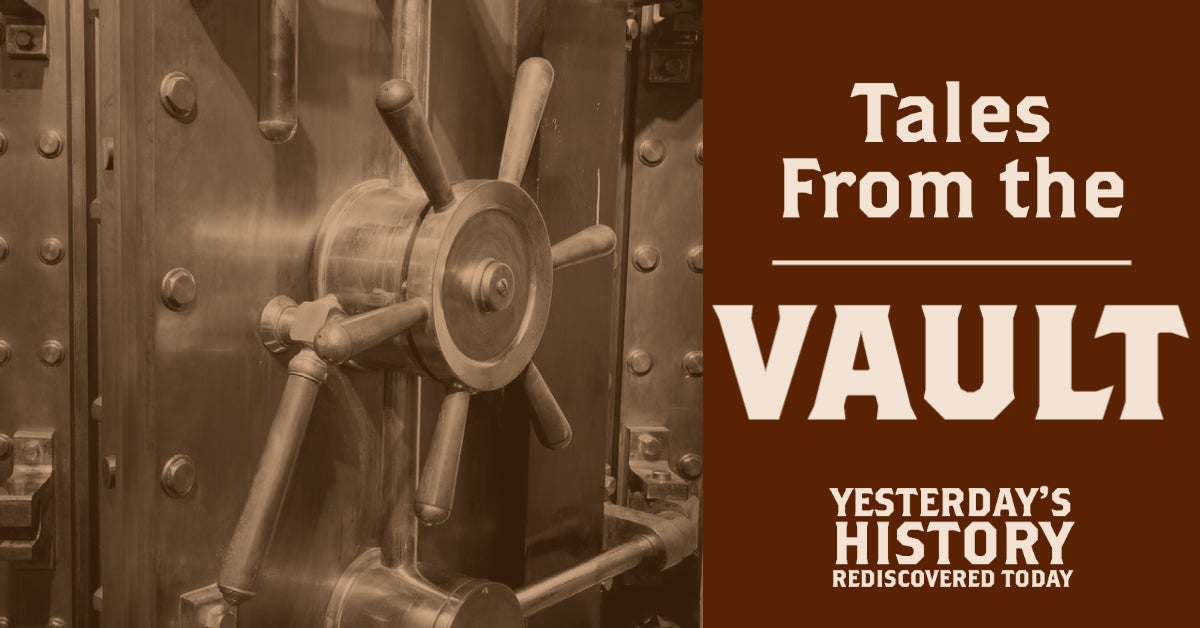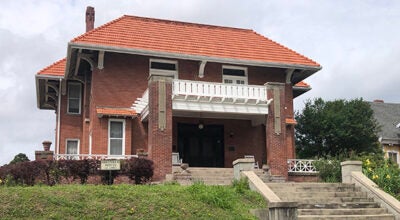FROM THE VAULT: Rollin’ on the River
Published 8:00 am Sunday, April 30, 2023
By the Late Gordon Cotton | Originally published in The Vicksburg Post on May 19, 2013
“Barges have been running into the bridge ever since I can remember,” said Odis Lowery Sr. And his memory of events on the Mississippi goes back a long way, to when he was 16 and went to work for Anderson-Tully. He’s now 84.
In the 50 years he spent working on the river, many of them piloting towboats and salvaging wrecks, he never had an accident and never lost a barge though he has “taken them off just about every pier on the Vicksburg bridge.” Most of the accidents he believes were caused by either poor judgment or overloading.
He was raised on a shanty boat under the old river bridge. His father was a boat pilot, operating pump boats and dredges for the Army Corps of Engineers, and the family “moved here and there. I went to school in Greenville for a while and then came back down here. When I got old enough I went to work for Anderson-Tully, I just stayed there,” eventually becoming vice president of the lumber company.
He began as a deckhand “and when I got enough age on me, they gave me a chance in the pilot house. I got my first pilot’s license in 1947, I think it was.”
He worked his way up, doing everything for the company on the river, piloting, pushing barges, even building a fuel house at Mill D, and there were repairs and maintenance.
The barges — 36 feet wide and 225 feet long — had to be flipped over when they needed new steel bottoms. Odis and his crew did the work here. The only injury he ever suffered happened when he salvaged a barge near Little Rock, “a really big one. I had raised it, and we had sold it and moved it downriver to the scrap yard. I had got up on it for some reason, had it picked up, and that cable, or chain, or whatever it was we were picking it up with, cut through the side and pulled the sides in and I got off balance,” Odis remembers. “It went ‘toooong’ and hit me right below the eye.”
He got into salvaging by helping people in trouble. “People would break down around here, would have a barge sinking, and they’d want some pumps — rescue pumps — and we’d go out there and patch ’em up a little bit so they could get on down the river,” he said. It became more and more work, more than just a little job.
One day John Tully, one of the owners of Anderson-Tully, asked Odis if he kind of liked that salvage work, and he replied, “Yeah, I like it. I like all of it. I like running your boats, everything else.”
Odis bought a second-hand barge and built an A-frame on it from plans drawn by Bart Tully. There are various ways of salvaging a sunken barge, Odis said, and one is using mooring chains.
There was a barge sunk north of town, and he salvaged the anchors in order to get the chains, something he hadn’t done before. There were seven or eight shots — that’s a chain 90 feet long made of links 2 inches in diameter by about 10 inches long — which he sometimes bought at junk yards. If a chain ran short, he’d buy the extra links he needed.
When a barge sank after an explosion on the harbor, Odis was called on to salvage it and usually, “Anybody who had anything that sank they called me,” he said, adding that it was almost like a hotline.
Once he was called to New Orleans to raise a barge, and before he left the Crescent City, he had raised eight barges and a towboat. He had a system that never failed, using an air pump to get the sand and silt out of the sunken vessel.
He said he thought he’d never get away from New Orleans, and then on the way home he was called on to raise another barge at Baton Rouge.
“I never had to go looking for a job,” he said. “I had all the jobs I wanted.”
The biggest salvage job in Vicksburg history was probably the raising of the Ironclad Cairo in the Yazoo River in 1964. Odis wasn’t a party to that operation, which many dubbed a fiasco.
Throngs sat on the riverbank to watch, seeing the Civil War boat cut in two by the cables. Though Bisso, out of New Orleans, rented Anderson-Tully’s A-frame which Odis had built, he didn’t watch the operation. He believes the late Dolly King had the best plan — to lift the boat with a metal sling — but he said Bisso’s idea was, “Let’s get it done and go home.”
Salvaging the steamboat Sprague, which sank in 1974, Odis said, “was the biggest joke of all. They got a house-mover out of Memphis to come down here. He came in here with the idea he was going to pull that boat out of that mud with some little old winch trucks. That was so silly. There was no way in hell for him to get that up. He went in there and, of course, he went broke.”
The job was then put out for bids, and Odis didn’t bid much and he didn’t get it.
After several more bids were taken, Anderson-Tully got the job. The hull had to be cut in two, but before it could be salvaged something had to be done: “You’ve got to get the mud out of the boat before you can get the boat out of the mud.”
On his trips up and down the river, Odis often took his wife, Rosa, along. They’d stay in a motel at night, but she loved to cook for the crew and the men from the Coast Guard.
“All them boys, they loved her,” he said. “They’d be there at mealtime.”
He and Rosa, who was a Mackey before they married, met when they were in their teens and she was selling tickets at the Alamo Theater. They eloped, ran off to Greenville to get married by a justice of the peace, he said to a laugh, “Her old man would have shot me if he could have got to me.”
Later people advised them to, “Get that wedding blessed, blah, blah, blah,” he said. They’ve been married 65 years, though many said the marriage wouldn’t last, but “We’ve been blessed with each other.”
For a short time, in the early days of their marriage, Odis left Anderson-Tully to go to welding school at R.G. LeTourneau, and during those few months, he and Rosa supplemented their income by fishing — “Big scale. I’d take Rosa out there to row while I cast the net. I knew where all the lakes were. I sold the fish to markets. Now I fish a little — but with a pole.”
In later years, back at Anderson-Tully, one of the bosses asked Odis if he thought it would be OK to name a boat after Mrs. Lowery, and Odis replied, “I reckon so, I don’t see where it would hurt her feelings any,” so a vessel bought in West Virginia and brought down the Ohio and Mississippi was named the Rosa Lowery. There was no christening, he said, because, “That crew of mine would have drank the champagne.”
Odis had his own welding shop, for personal use, and he taught his son Ricky to weld. He also took on a project that made him look like the Noah of Lee Road — he built a towboat in his backyard.
When he completed the vessel, which was 16 feet wide and 45 feet long, it was taken by a lowboy down Clay Street to the waterfront and to the site of the I-20 bridge construction. He later sold the boat along with a few barges he rented.
After he retired, Odis seldom piloted a boat, and that was usually when waters were extremely treacherous, “and I’d set the pilot back and take over.” Last year his help was needed when some barges hit the bridge but he couldn’t assist because “A stroke made up my mind for me. That cinched everything.” His life has been a history of piloting and salvaging and Odis said, “I’ve been on the river all my life. I never did leave.”
Gordon Cotton (1936-2021) was a Vicksburg and Warren County icon who spent a lifetime learning and sharing history.




